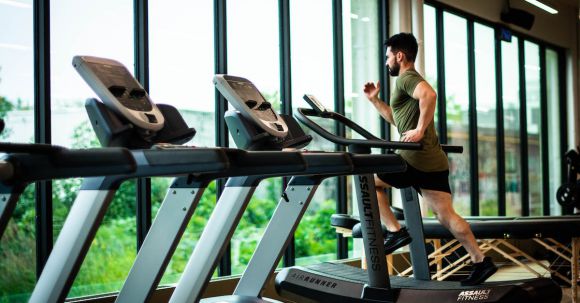Cardiovascular exercises, also known as cardio or aerobic exercises, are an essential part of any fitness routine. These exercises increase the heart rate, strengthen the cardiovascular system, and improve overall health and fitness. If you’re a beginner looking to incorporate cardio into your workout routine, this guide will provide you with the necessary information to get started.
Understanding Cardiovascular Exercises
Cardiovascular exercises are activities that increase your heart rate and breathing rate over an extended period. The primary goal of these exercises is to improve the efficiency of your heart and lungs, allowing them to supply oxygen-rich blood to your muscles more effectively. Examples of cardiovascular exercises include running, cycling, swimming, dancing, and brisk walking.
The Benefits of Cardiovascular Exercises
Engaging in regular cardiovascular exercises offers numerous benefits for both your physical and mental health. Some of the key benefits include:
1. Improved heart health: Cardio exercises strengthen your heart muscles, reducing the risk of heart diseases such as heart attacks and strokes.
2. Weight management: Cardio exercises help burn calories and fat, aiding in weight loss and weight management.
3. Increased endurance: Regular cardio workouts enhance your stamina and endurance levels, allowing you to perform daily activities with less fatigue.
4. Mental well-being: Cardio exercises release endorphins, also known as “feel-good” hormones, promoting a positive mood and reducing stress and anxiety.
Getting Started with Cardiovascular Exercises
Before beginning any new exercise program, it’s important to consult with your healthcare provider, especially if you have any underlying health conditions. Once you have the green light, follow these steps to incorporate cardiovascular exercises into your routine:
1. Start slow: If you’re a beginner, begin with low-impact exercises such as brisk walking or cycling. Gradually increase the intensity and duration of your workouts as your fitness level improves.
2. Choose activities you enjoy: Find activities that you enjoy doing, as this increases the likelihood of sticking to your exercise routine. Whether it’s dancing, swimming, or playing a sport, make it fun!
3. Set realistic goals: Set achievable goals that align with your fitness level. For example, aim to walk for 30 minutes three times a week and gradually increase the time or intensity as you progress.
4. Mix it up: Incorporate a variety of cardiovascular exercises into your routine to keep things interesting and challenge different muscle groups. This can help prevent boredom and improve overall fitness.
5. Monitor your intensity: Pay attention to your heart rate during workouts. Aim to reach a moderate intensity level, where you can still hold a conversation but feel slightly breathless.
6. Stay hydrated: Drink plenty of water before, during, and after your workouts to stay hydrated and maintain optimal performance.
Tracking Your Progress
To stay motivated and track your progress, consider using fitness apps or devices that monitor your heart rate, distance covered, and calories burned. These tools can provide valuable insights into your workout sessions and help you set new goals to keep improving.
Incorporating cardiovascular exercises into your fitness routine is a fantastic way to improve your overall health and well-being. Remember to start slow, choose activities you enjoy, and set realistic goals. With consistency and dedication, you’ll soon experience the incredible benefits of cardiovascular exercises. So lace up your sneakers, dive in, and begin your journey towards a healthier, fitter you!





